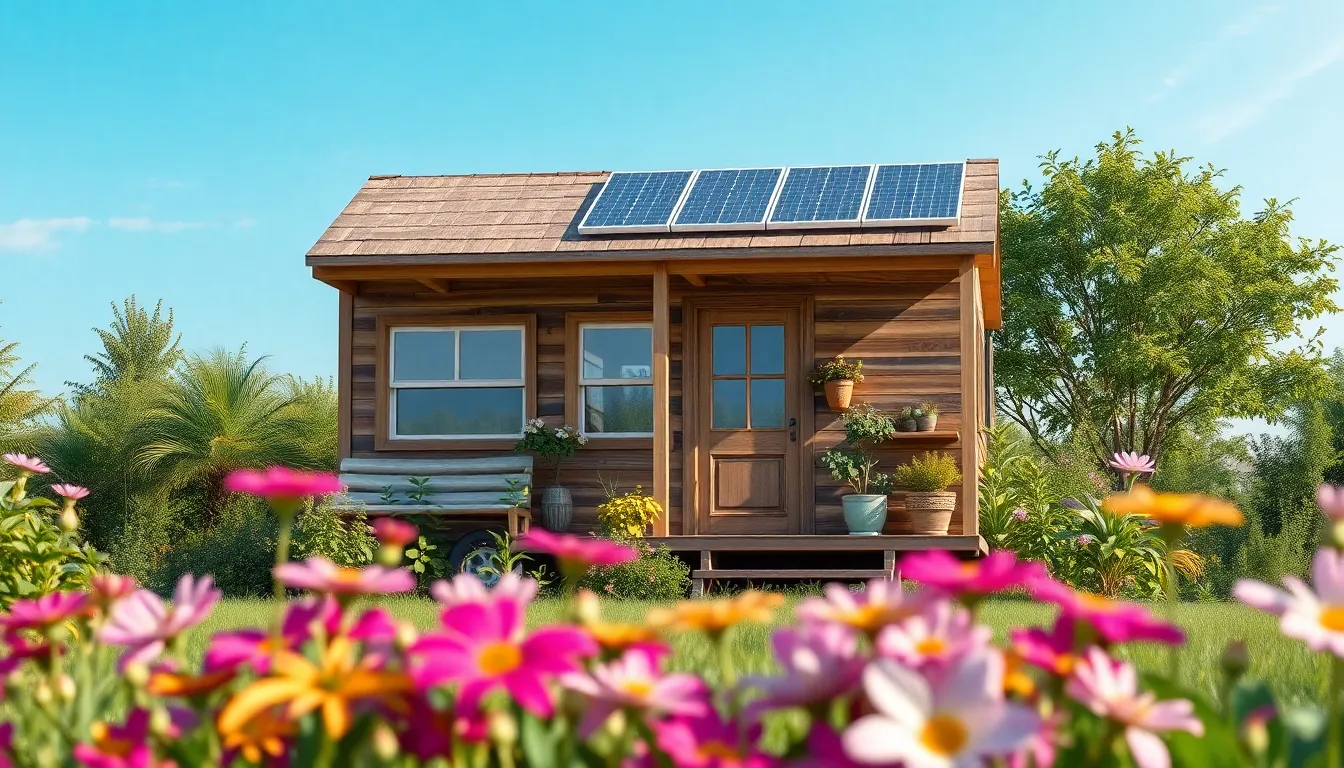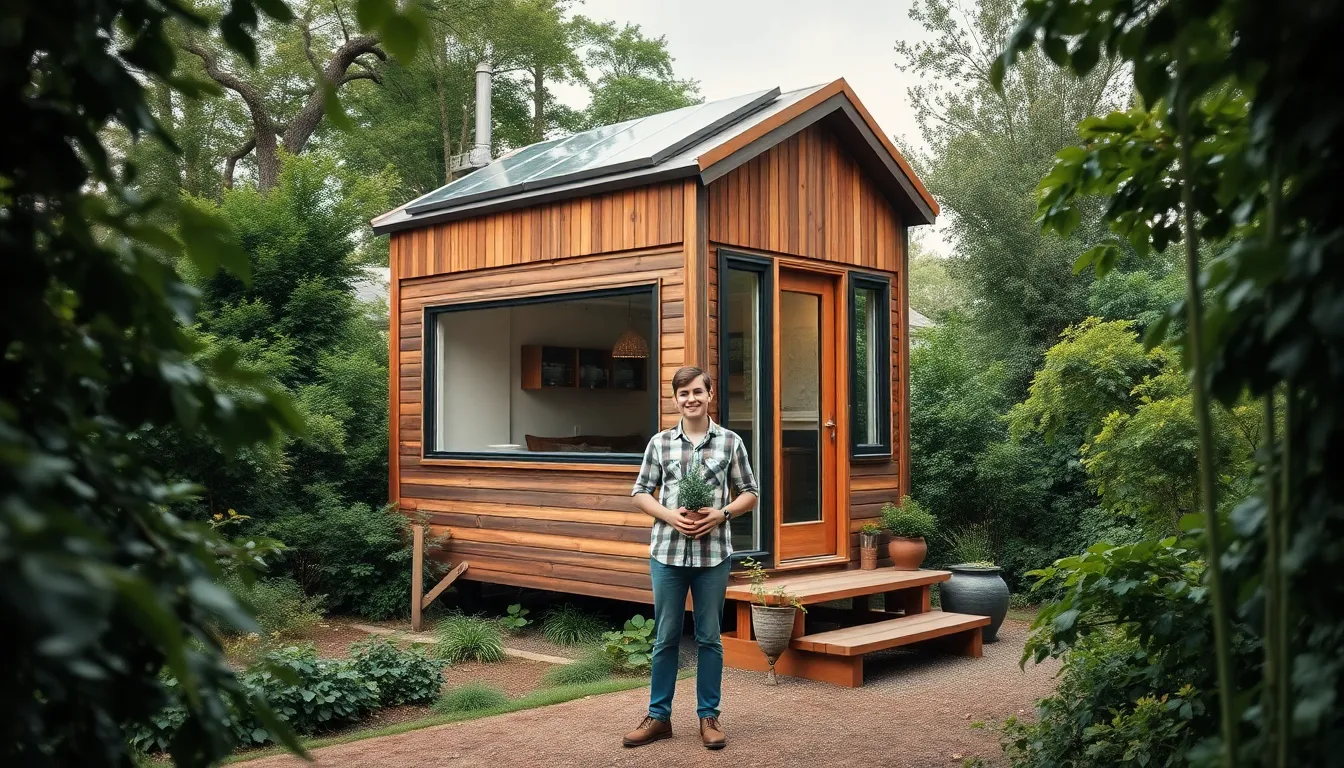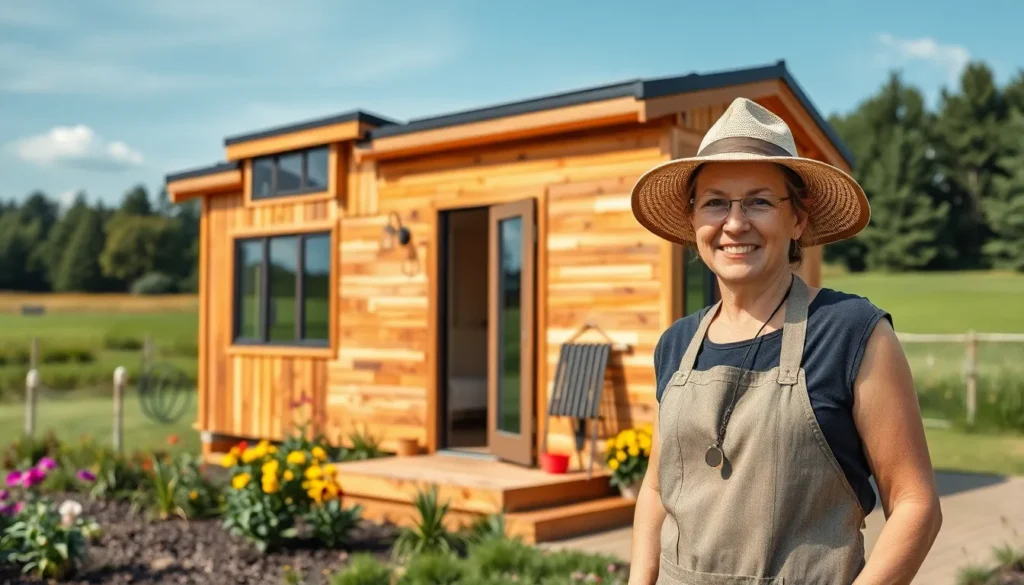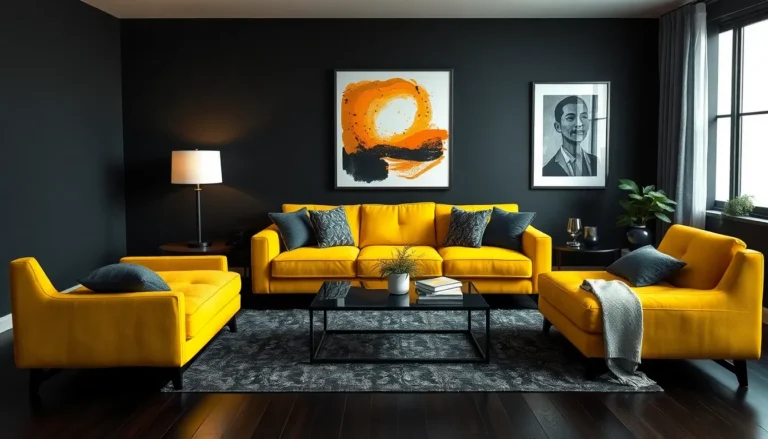Table of Contents
ToggleThe tiny home movement has taken the world by storm, capturing the hearts of those seeking simplicity and sustainability. With rising housing costs and a growing desire for minimalism, tiny home builders are stepping in to create innovative and efficient living spaces. These builders are not just constructing homes; they’re crafting lifestyles that prioritize freedom and environmental consciousness.
As more people embrace the idea of downsizing, tiny home builders are redefining what it means to live comfortably. From eco-friendly materials to smart design solutions, these builders are transforming limited square footage into functional havens. This article explores the world of tiny home builders, highlighting their unique approaches and the benefits of choosing a tiny home. Whether someone is looking to build a cozy retreat or a permanent residence, the tiny home movement offers an exciting alternative to traditional living.
Overview of Tiny Home Builders
Tiny home builders play a crucial role in shaping the growing movement centered around minimalist living. These builders design and construct homes that typically range from 100 to 400 square feet. They offer unique solutions to high housing costs and promote environmentally friendly lifestyles.
Key Attributes of Tiny Home Builders
- Innovative Designs: Tiny home builders create versatile layouts that maximize space utility. Features like multi-functional furniture, lofted sleeping areas, and hidden storage optimize functionality.
- Sustainable Materials: Many builders prioritize eco-friendly materials such as reclaimed wood, bamboo, and energy-efficient appliances. These choices minimize environmental impact and promote sustainability.
- Custom Options: Builders often provide customization to meet individual preferences. Homeowners can select features, layouts, and finishes that reflect their style, ensuring personalized spaces.
- Affordability Focus: Tiny homes generally cost significantly less than traditional homes. Builders offer various pricing options and financing solutions, making tiny homes financially accessible.
- Community Building: Some tiny home builders create communities that foster connection among residents. These neighborhoods support the ideals of minimalism and sustainable living.
Popular Tiny Home Builders
| Builder Name | Location | Notable Features |
|---|---|---|
| Tumbleweed Tiny House Company | Nationwide | Customizable designs for various needs |
| Tiny Heirloom | Oregon | Luxury tiny homes with high-end finishes |
| Escape Homes | Missouri | Prefab models with sustainable specifications |
| Wheelhaus | Colorado | Stylish designs focused on mobility |
| Eco-Capsule | European countries | Pod-style homes designed for off-grid living |
Tiny home builders continue to innovate and adapt to the evolving needs of homeowners. Their commitment to simplicity, sustainability, and affordability makes them key players in the modern housing landscape.
Benefits of Choosing Tiny Homes


Tiny homes offer numerous advantages, making them an appealing option for many seeking affordable and sustainable living solutions. The benefits include cost efficiency and a positive environmental impact.
Cost Efficiency
Cost efficiency ranks as a primary benefit of tiny homes. The initial investment for a tiny home generally averages between $20,000 and $100,000, significantly lower than traditional homes. Monthly expenses, including utility bills and maintenance, also decrease due to smaller living spaces. For instance, owners can save up to 50% on utilities compared to conventional houses.
Financing options for tiny homes also differ from standard homes. Many tiny home builders offer creative financing solutions, including personal loans and crowdfunding options, allowing potential homeowners more flexibility. Resale value often remains stable, as the demand for affordable housing continues to grow.
Environmental Impact
Environmental impact stands out as another key benefit of tiny homes. These homes typically consume fewer resources during construction and require less energy to operate. Many tiny home builders utilize eco-friendly materials, such as reclaimed wood and sustainable insulation materials, which reduce the carbon footprint.
Tiny homes frequently promote off-grid living, allowing owners to harness renewable energy sources like solar power. This capability contributes to lower energy consumption levels and encourages sustainable practices. Living in a tiny home often leads to reduced waste production, encouraging residents to adopt a minimalist lifestyle that prioritizes essential belongings and eco-conscious choices.
Overall, tiny homes present cost-effective and environmentally friendly options, aligning with the growing demand for sustainability in modern living.
Popular Tiny Home Builders
Several tiny home builders have emerged as leaders in the industry, each offering unique designs and solutions for potential homeowners. Below are overviews of three prominent builders in the tiny home movement.
Builder A Overview
Tumbleweed Tiny House Company specializes in customized tiny homes, focusing on high-quality craftsmanship and innovative designs. Founded in 1999, Tumbleweed offers models ranging from 117 to 400 square feet. They emphasize eco-friendly materials and energy-efficient features. Their homes often include customizable layouts, allowing homeowners to tailor interior space to their needs. Additionally, Tumbleweed provides educational resources for aspiring tiny home dwellers, promoting sustainable living practices.
Builder B Overview
Tiny Heirloom captures attention with its luxurious yet functional tiny homes. Founded in 2014, this builder focuses on high-end finishes and personalized designs. Models typically range from 200 to 400 square feet, incorporating space-saving solutions and high-efficiency appliances. Tiny Heirloom emphasizes sustainability by utilizing reclaimed materials and energy-efficient technologies. The company also offers design services to help clients create a home that reflects their individual style and values.
Builder C Overview
Escape Homes focuses on stylish, portable tiny homes with a minimalist aesthetic. Established in 2017, Escape Homes creates designs that range from 190 to 400 square feet. Their homes are notable for their smart layouts and use of sustainable materials. Escape Homes also promotes an eco-conscious lifestyle through their adherence to green building practices. Many models feature built-in furniture and high-efficiency heating and cooling systems, maximizing comfort in a compact space.
Choosing the Right Builder
Selecting the correct tiny home builder plays a vital role in ensuring satisfaction with the final product. Various factors and questions guide the decision-making process.
Key Factors to Consider
- Experience and Reputation: Evaluate builders’ portfolios and customer reviews. Established builders, such as Tumbleweed and Tiny Heirloom, demonstrate expertise through quality craftsmanship and design.
- Customization Options: Look for builders offering customizable designs that align with specific needs. Customizable features can include layout changes, material selections, and energy solutions.
- Sustainability Practices: Investigate the materials and construction methods used. Builders committed to sustainability often use eco-friendly materials and promote energy-efficient solutions for long-term savings.
- Budget Alignment: Determine the pricing structure and financing options. Assess if the builder provides transparent pricing and affordable solutions that fit within budget constraints.
- Communication: Prioritize builders who maintain open communication throughout the process. Clear lines of communication foster better collaboration and ensure all specifications are met.
- Timeframe: Inquire about the estimated project duration. Understanding construction timelines can help manage expectations and plan accordingly.
Questions to Ask
- What is your experience with tiny home construction? Ask for specific examples of past projects to gauge the builder’s experience.
- Can I see customer testimonials or references? Request references to better understand the builder’s reputation and quality of service.
- What custom options do you offer? Discuss available designs and features to ascertain how well they can tailor a home to specific preferences.
- What materials do you use in construction? Confirm the use of sustainable materials to align with environmental goals.
- What financing options are available? Understand the financial flexibility provided by the builder to assist with investment decisions.
- How do you communicate updates during the building process? Clarify how and when the builder will provide progress updates to stay engaged throughout the project.
Making informed decisions based on these factors and questions significantly enhances the tiny home building experience.







